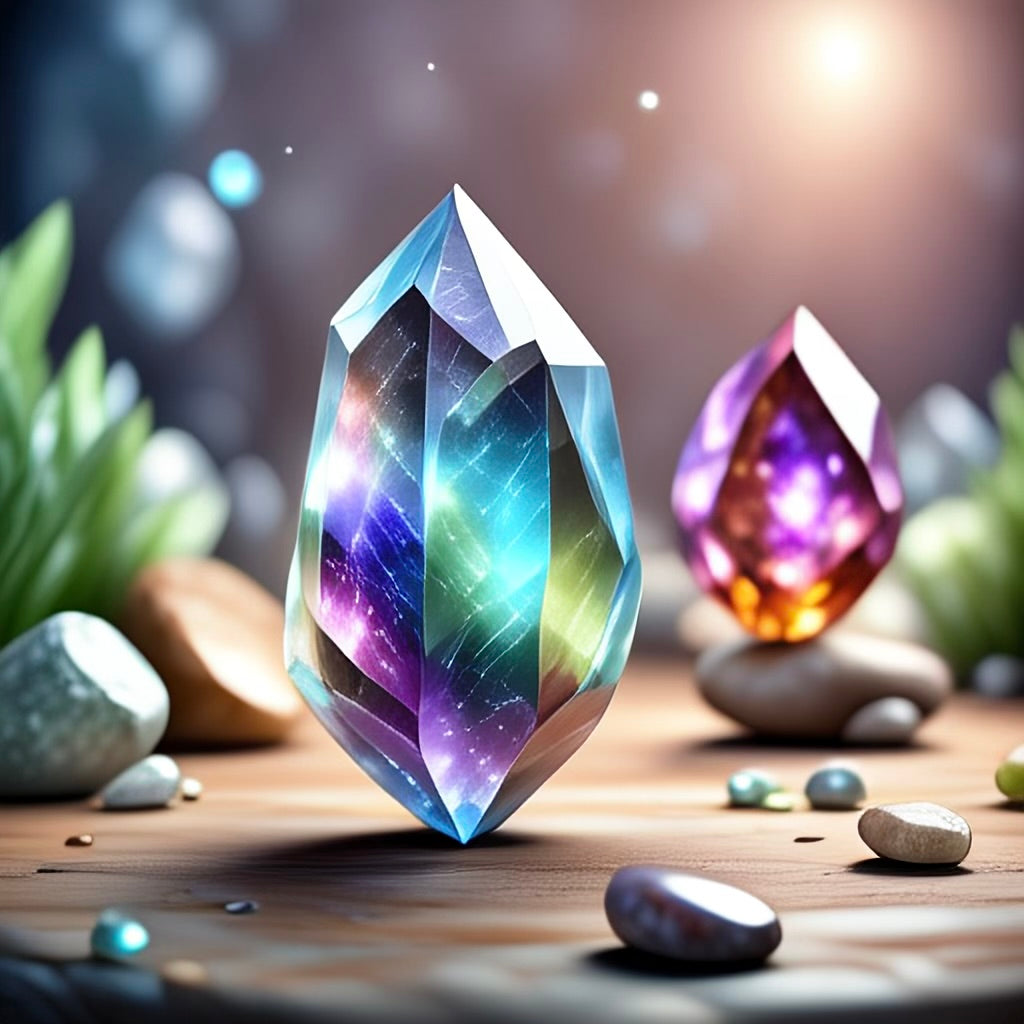
Minerals, Crystals, Rocks, and Gemstones: What’s the Difference?
Share
At Nature’s Own Gallery, we love sharing the beauty and wonder of Earth’s treasures, from sparkling crystals to polished gemstones and unique minerals. But what exactly is the difference between these terms? While they’re often used interchangeably, each has its own distinct meaning. Let’s break it down!
What is a Mineral?
A mineral is a naturally occurring, inorganic substance with a specific chemical composition and crystal structure. These substances form over thousands to millions of years through geological processes, creating the foundation for many of the beautiful stones we admire.
Key characteristics of minerals:
• Naturally occurring in the Earth
• Inorganic (not made by plants or animals)
• Has a specific chemical formula and atomic structure
• Solid at room temperature
Examples of minerals:
• Quartz (found in many gemstones like amethyst and citrine)
• Feldspar (a major component of moonstone)
• Calcite (a soft mineral often found in seashells and limestone)
What is a Crystal?
A crystal is a solid material whose atoms are arranged in a highly ordered, repeating pattern. Many minerals form crystals, but not all minerals develop into large, well-formed ones. Crystals can grow in various shapes depending on their atomic structure, which is why we see so many different formations in nature.
Examples of crystals:
• Quartz (hexagonal crystal structure)
• Amethyst (a purple variety of quartz)
• Pyrite (cubic crystal structure, also called “Fool’s Gold”)
• Bismuth (forms unique, colorful geometric crystals)
Crystals are often sought after for their aesthetic appeal, metaphysical properties, and use in jewelry.
What is a Stone?
A stone is a general term that refers to a solid, naturally occurring substance made up of minerals or rock. Unlike minerals, which have a specific chemical composition, stones can be composed of multiple minerals or even organic materials.
Key characteristics of stones:
• Can be made of one or more minerals
• May contain fossils or organic material
• Often shaped by nature (like river stones) or polished for jewelry
Examples of stones:
• Obsidian (a volcanic glass, technically not a mineral)
• Jasper (a form of microcrystalline quartz)
• Lapis Lazuli (a rock composed of multiple minerals, including lazurite and pyrite)
• Coral Stone (formed from ancient coral deposits)
What is a Gemstone?
A gemstone is a mineral, rock, or organic material that has been cut and polished for use in jewelry or decorative objects. While many gemstones are minerals, some, like amber (fossilized tree resin) and pearl (formed by mollusks), are organic.
What makes a gemstone special?
• Beauty: Color, clarity, and brilliance make them desirable
• Durability: Hardness and toughness ensure they last
• Rarity: Some gemstones are more valuable due to their scarcity
Examples of gemstones:
• Sapphire (a precious variety of corundum)
• Ruby (another corundum variety, but red due to chromium)
• Emerald (a green variety of beryl)
• Labradorite (a feldspar mineral known for its iridescent flash)
• Green Aventurine (a quartz variety with a shimmering effect)
Bringing It All Together
Think of it like this:
• All gemstones are minerals or rocks, but not all minerals or rocks are gemstones.
• All crystals are minerals, but not all minerals form into well-defined crystals.
• A stone can be a mineral, rock, or organic material, shaped by nature or polished for use.
Next time you browse the collections at Nature’s Own Gallery, you’ll have a deeper understanding of the stunning stones we carry. Whether you’re drawn to the shimmer of labradorite, the depth of amethyst, or the rich history of coral stone, each piece has a story to tell—one written by the Earth over millions of years.
Have a favorite gemstone, crystal, mineral, or stone? Let us know in the comments!
